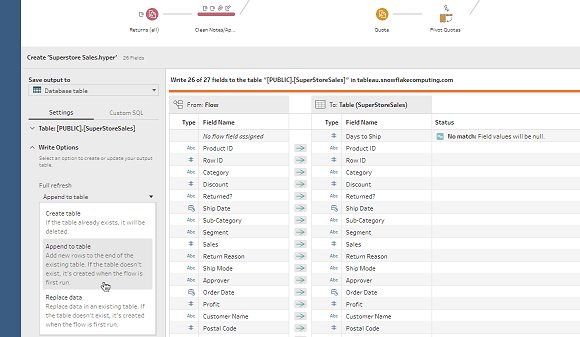Tableau sets the table for neater data preparation
Applications run on data, obviously. But how much time do we think about the way applications get the data fed into them and how well that process is being performed.
Data quality, data ingestion and data preparation are, perhaps somewhat unfortunately, some of the least appealing aspects of application architecture.
Whether it falls to developers, or perhaps more likely to their operations and DevOps counterparts, data preparation is critical.
Tableau Software has aimed to take some of that data prep headache away with its latest 2020.3 iteration release.
The analytics platform company says that its technology has the ability for customers to output to and update external databases directly from Tableau Prep Builder, a function which essentially expands the Tableau platform to serve a broader set of data preparation needs.
The latest release also includes new tools for Tableau administrators to simplify the distribution of product licenses to various groups in their organisation.
“The new capabilities in Tableau 2020.3 continue to extend the breadth and depth of the entire Tableau platform, helping customers to easily scale their analytics further than ever before,” said Francois Ajenstat, chief product officer at Tableau Software. “By introducing the ability to write to an external database, Tableau Prep can now be used for analytics use cases outside of the Tableau platform, from data science to data governance.”
This is all about allowing software and data professionals to make data preparation process more governed and scalable, as well as more deeply integrated with the rest of an organization’s IT infrastructure.
Users can store cleaned and prepared data from Tableau Prep Builder in a on-premises or cloud-based database.
How clean is your data?
By storing the data in a database, the same ‘clean datasets’ can be leveraged by any other application connected to that database, including advanced machine learning or data mining applications.
This tool utilises the drag-and-drop visual experience that the firm’s user base already knows. Users can ‘publish a data flow’ to their database without complex coding or third-party tools.
Developers… should (if the above engineering mechanisms and total technology proposition all works) end up with cleaner better prepared more ingestible data at the application dinner table… but please still use a napkin if you’re having ribs.

Approved image use – source: Tableau



